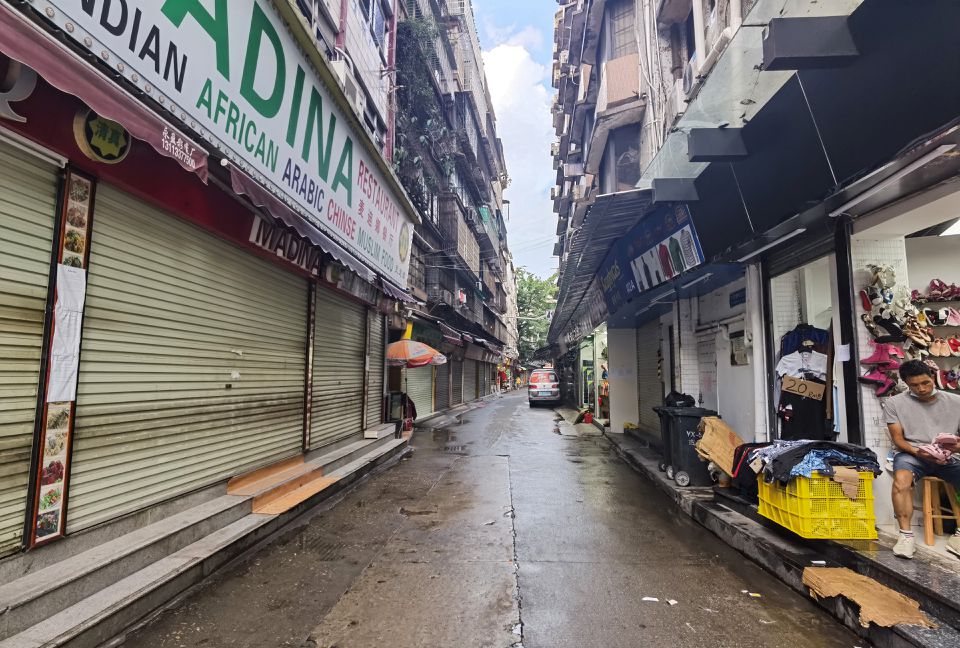China’s COVID epicentre shifts to Guangzhou as outbreaks widen
 NepalPress
NepalPress

New coronavirus cases surged in Guangzhou and other Chinese cities, official data showed on Tuesday, with the global manufacturing hub becoming China’s latest COVID-19 epicentre and testing the city’s ability to avoid a Shanghai-style lockdown, Reuters reported.
Nationwide, new locally transmitted infections climbed to 7,475 on Nov. 7, according to China’s health authority, up from 5,496 the day before and the highest since May 1. Guangzhou accounted for nearly a third of the new infections.
The increase was modest by global standards but significant for China, where outbreaks are to be quickly tackled when they surface under its zero-COVID policy. Economically vital cities, including the capital Beijing, are demanding more PCR tests for residents and locking down neighbourhoods and even districts in some cases.
The sharp rebound will test China’s ability to keep its COVID measures surgical and targeted, and could dampen investors’ hopes that the world’s second-largest economy could ease curbs and restrictions soon.
“We are seeing a game between rising voices for loosening controls and rapid spreading of COVID cases,” said Nie Wen, a Shanghai-based economist at Hwabao Trust.
Considering how the nationwide COVID curbs are crushing domestic consumption, Nie said he had downgraded his fourth-quarter economic growth forecast to around 3.5% from 4%-4.5%. The economy grew 3.9% in July-September.
The rising case load dragged on China’s stock markets on Tuesday, but shares have not yet surrendered last week’s big gains.
Investors see China’s beaten-down markets as an attractive prospect as a global slowdown looms, and have focused on small clues of gradual change – such as more targeted lockdowns and progress on vaccination rates.
“No matter how harsh the letter of the law is…there is a little bit more loosening,” said Damien Boey, chief macro strategist at Australian investment bank Barrenjoey.
NO FULL LOCKDOWN YET
Guangzhou, capital of Guangdong province, reported 2,377 new local cases for Nov. 7, up from 1,971 the previous day. It was a dramatic jump from double-digit increases two weeks ago.
Surging case numbers in the sprawling southern city, dubbed the “factory floor of the world”, means Guangzhou has surpassed the northern Inner Mongolia city of Hohhot to become China’s COVID epicentre, in its most serious outbreak ever.
Many of Guangzhou’s districts, including central Haizhu, have imposed varying levels of curbs and lockdowns. But, so far, the city has not imposed a blanket lockdown like the one in Shanghai earlier this year.
Shanghai, currently not facing a COVID resurgence, went into a lockdown in April and May after reporting several thousand new infections daily in the last week of March.
“We have been working from home for the past couple of days,” said Aaron Xu, who runs a company in Guangzhou.
“Only a few compounds have been locked up so far. Mostly we are seeing disruptions in the form of public transit services being suspended and compound security barring couriers and food delivery. And we have to do PCR tests every day.”
RISING CASES
In Beijing, authorities detected 64 new local infections, a small uptick relative to Guangzhou and Zhengzhou, but enough to spark a new burst of PCR tests for many of its residents and a lockdown of more buildings and neighbourhoods.
“The lockdown situation has continued to deteriorate quickly across the country over the past week, with our in-house China COVID lockdown index rising to 12.2% of China’s total GDP from 9.5% last Monday,” Nomura wrote in a note on Monday.
Zhengzhou, capital of central Henan province and a major production base for Apple (AAPL.O) supplier Foxconn (2317.TW), reported 733 new local cases for Nov. 7, more than doubling from a day earlier.
In the southwest metropolis of Chongqing, the city reported 281 new local cases, also more than doubling from 120 a day earlier.
In the coal-producing region of Inner Mongolia, the city of Hohhot reported 1,760 new local cases for Nov. 7, up from 1,013 a day earlier.














